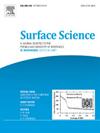Semi-metallic reconfiguration induced by asymmetrically interatomic-interactions accelerate electrochemical nitrate reduction
IF 1.8
4区 化学
Q3 CHEMISTRY, PHYSICAL
引用次数: 0
Abstract
Effective conversion from nitrate to ammonia using an electrochemical method is attracting much attention, but which has to face the difficulty of lower conversion performance and unavoidable competing reaction. Herein, we develop an intriguing surface engineering strategy to reorganize orderly the electronic structures of catalysts, in which the superficial Cu sites can be asymmetrically hybridized with internal Fe atoms through an indirect orbital interaction, finally leading to a semi-metallic characteristic to optimize the adsorption or dissociation process of nitrates. The comprehensive calculations confirm that the potential barriers at the rate-limiting steps can be effectively decreased due to their appropriate bonding interaction with reactants. More importantly, the competing hydrogen evolution reaction is also suppressed. This work suggests a feasible strategy to accelerate nitrate reduction by particular catalyst surface engineering.

非对称原子间相互作用引起的半金属重构加速了硝酸盐的电化学还原
利用电化学方法将硝态氮有效转化为氨已受到广泛关注,但其转化性能较低,且存在不可避免的竞争反应。在此,我们开发了一种有趣的表面工程策略来有序地重组催化剂的电子结构,其中表面Cu位点可以通过间接轨道相互作用与内部Fe原子不对称杂化,最终导致半金属特征,以优化硝酸盐的吸附或解离过程。综合计算证实,在限速步骤的势垒可以有效地降低,因为它们与反应物的适当的键相互作用。更重要的是,相互竞争的析氢反应也被抑制。本研究提出了一种通过特定的催化剂表面工程加速硝酸还原的可行策略。
本文章由计算机程序翻译,如有差异,请以英文原文为准。
求助全文
约1分钟内获得全文
求助全文
来源期刊

Surface Science
化学-物理:凝聚态物理
CiteScore
3.30
自引率
5.30%
发文量
137
审稿时长
25 days
期刊介绍:
Surface Science is devoted to elucidating the fundamental aspects of chemistry and physics occurring at a wide range of surfaces and interfaces and to disseminating this knowledge fast. The journal welcomes a broad spectrum of topics, including but not limited to:
• model systems (e.g. in Ultra High Vacuum) under well-controlled reactive conditions
• nanoscale science and engineering, including manipulation of matter at the atomic/molecular scale and assembly phenomena
• reactivity of surfaces as related to various applied areas including heterogeneous catalysis, chemistry at electrified interfaces, and semiconductors functionalization
• phenomena at interfaces relevant to energy storage and conversion, and fuels production and utilization
• surface reactivity for environmental protection and pollution remediation
• interactions at surfaces of soft matter, including polymers and biomaterials.
Both experimental and theoretical work, including modeling, is within the scope of the journal. Work published in Surface Science reaches a wide readership, from chemistry and physics to biology and materials science and engineering, providing an excellent forum for cross-fertilization of ideas and broad dissemination of scientific discoveries.
 求助内容:
求助内容: 应助结果提醒方式:
应助结果提醒方式:


